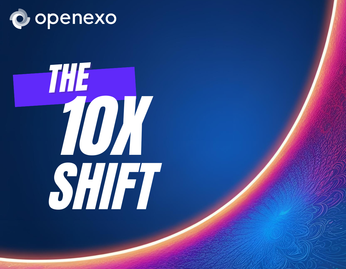
Leveraged and Shared Assets: The Key to Exponential Growth
Leveraged and Shared Assets (LSAs) drive exponential growth, boosting profitability up to 6.8 times. Explore how BlaBlaCar, LAND Initiative, and others leverage LSAs for innovation and sustainability, transforming traditional business models.
Did you know that companies leveraging shared assets can achieve up to 6.8 times higher profitability? In an era where agility and scalability are paramount, the concept of Leveraged and Shared Assets (LSAs) is transforming how organizations operate. By shifting from traditional asset ownership to renting or sharing resources, even essential parts of the business, companies can unlock unprecedented growth and cost-efficiency. This article delves into the power of LSAs, drawing on insights from "Exponential Organizations 2.0" by Salim Ismail, and explores how they drive innovation across various industries.
Understanding Leveraged and Shared Assets
LSAs, or shared resources, involve using rented or shared assets to enhance an organization's flexibility and efficiency. This approach, part of the broader sharing economy, allows companies to reduce fixed costs and increase scalability, leading to greater agility and the ability to respond quickly to market changes. As Forbes notes, "The sharing economy blows up the industrial model of companies owning and people consuming," highlighting the transformative impact of LSAs on traditional business models.
Case Studies: LSAs in Action
BlaBlaCar: Carpooling and Sustainability
Founded by Frederic Mazzella in 2006, BlaBlaCar has grown to over 90 million members across 22 countries. This carpooling platform connects drivers with empty seats to passengers, creating new value exchanges and promoting sustainability. Frederic Mazzella captures the essence of BlaBlaCar's impact:
"Carpooling creates a unique context: it makes possible exchanges of value between people who otherwise would not have had a chance to meet."
By charging a transaction fee of 10-12% per trip, typically around 10 euros, BlaBlaCar not only achieves economic efficiency but also contributes to environmental sustainability, saving 1.6 million tons of carbon dioxide annually. Explore more about BlaBlaCar's impact and its business model.
LAND Initiative: Tokenizing Land Ownership
The LAND Initiative, led by Capital Certainty, focuses on acquiring large land estates and turning land ownership into digital shares through tokenization. This initiative aims to create a digital agrotech hub, increasing land value by 30-200%. Their Massively Transformative Purpose (MTP) is to "Make LAND's prosperity resilient, ownership accessible, destiny diverse, and innovation global." Tokenization, or turning assets into digital shares, allows for fractional ownership, making it accessible to a broader audience and driving both economic and social impact. Learn more about similar initiatives in tokenization case studies.
Sun Exchange: Crowdfunding Solar Energy
Sun Exchange leverages unused roof space to generate renewable energy by crowdfunding solar cells in sunny regions. This model not only democratizes access to solar power but also aligns with broader sustainability goals, demonstrating how LSAs can promote clean energy initiatives.
Waze: Improving Urban Traffic Efficiency
Waze, a navigation app, utilizes user-generated data to improve traffic flow in cities like Los Angeles and Mexico City. By leveraging shared data, Waze enhances public infrastructure, showcasing how LSAs can impact macro-level efficiency.
LabCentral/BioLabs: Fostering Biotech Innovation
LabCentral in Cambridge, Massachusetts, and BioLabs across eight cities offer shared lab spaces for biotech startups. LabCentral supports around 60 startups, while BioLabs supports over 300. These shared resources account for over 20% of Seed and Series A Venture Capital in US life sciences, illustrating how LSAs can drive innovation in cutting-edge sectors. The recent strategic partnership with AbbVie, supporting over 500 startups, underscores the potential of LSAs to foster early-stage innovation. Discover more about the impact of shared lab spaces on biotech startup funding here.
Tech Company Using Shared Cloud Services
In the tech industry, companies like Dropbox have successfully utilized shared cloud services to reduce infrastructure costs and scale rapidly. By renting rather than owning servers, these companies can focus on innovation and growth, exemplifying the power of LSAs in technology. Find out more about implementing leveraged assets in business on Quora.
Benefits of LSAs
The economic benefits of LSAs are clear: organizations implementing ExO strategies have seen:
- 6.8 times higher profitability
- 40 times higher shareholder returns
- 11.7 times better asset turnover
- 2.6 times better revenue growth
Beyond economics, LSAs contribute to environmental and social impact. By reducing resource consumption and waste, as seen in BlaBlaCar's reduction of CO2 emissions and Sun Exchange's promotion of renewable energy, LSAs align with sustainability goals. Additionally, they foster community building by creating new opportunities for interaction and value exchange, as exemplified by BlaBlaCar's MTP: "We bring freedom, fairness, and fraternity to the world of travel." Understand more about the concept of Leveraged and Shared Assets.
Challenges and Solutions
Implementing LSAs on a larger scale presents challenges, such as managing asset quality and availability. However, strategic partnerships, technology platforms, and robust data analytics can provide solutions to these issues. As Salim Ismail emphasizes, "If you're using leveraged assets, you have to get the unit metrics right. If you rent and share assets, you can drop your marginal cost pretty drastically and still see healthy returns." By focusing on these metrics and leveraging technology, organizations can overcome the challenges associated with LSAs. Dive deeper into the description of Leveraged and Shared Assets.
Implementation Strategies
Transitioning from traditional asset ownership to LSAs requires a strategic approach. Organizations should start by identifying non-core assets that can be shared or rented, then build partnerships or platforms that facilitate this sharing. Ensuring unit economics are viable is crucial for success. Insights from "Exponential Organizations 2.0" provide a roadmap for implementing these strategies, encouraging business professionals and executives to rethink traditional models and embrace the future of business.
Future Trends and Predictions
The future of LSAs looks promising, with the sharing economy continuing to disrupt traditional business models. As blockchain technology and tokenization become more prevalent, we can expect to see more innovative applications of LSAs across industries. "Exponential Organizations 2.0" predicts that organizations embracing these trends will not only achieve exponential growth but also contribute to more sustainable and connected communities.
Key Takeaways and Reflection Questions
How do Leveraged and Shared Assets enhance organizational agility and cost-efficiency?
Leveraged and Shared Assets allow organizations to reduce fixed costs and increase scalability, leading to greater agility and the ability to respond quickly to market changes.
What are some successful case studies of LSAs in action?
BlaBlaCar, LAND Initiative, Sun Exchange, Waze, and LabCentral/BioLabs are prime examples where LSAs drive innovation, sustainability, and exponential growth across different industries.
How can organizations effectively transition from traditional asset ownership to a model based on leveraged and shared assets?
Organizations should start by identifying non-core assets that can be shared or rented, and then build partnerships or platforms that facilitate this sharing, ensuring unit economics are viable.
What are the potential challenges and solutions associated with implementing LSAs on a larger scale?
Challenges include managing asset quality and availability, but solutions can involve strategic partnerships, technology platforms, and robust data analytics to optimize asset use.
How do LSAs contribute to sustainability and environmental goals?
LSAs promote sustainability by reducing resource consumption and waste, as seen in BlaBlaCar's reduction of CO2 emissions and Sun Exchange's promotion of renewable energy.
Conclusion
By embracing Leveraged and Shared Assets, organizations can unlock exponential growth and contribute to a more sustainable and connected world. The insights from "Exponential Organizations 2.0" provide a roadmap for implementing these strategies, encouraging business professionals and executives to rethink traditional models and embrace the future of business. Explore the potential of LSAs further and consider how your organization can leverage these principles to achieve transformative success. The journey towards exponential growth starts with a shift in mindset and a willingness to embrace the power of sharing.
Gone are the days when owning everything was the key to success. Now, it's all about sharing the ride—and not just in carpooling! Dive deeper into the world of LSAs and see how they can propel your organization to new heights. Learn more about case studies of shared assets in industries and the basics of leverage in finance.
ExO Insight Newsletter
Join the newsletter to receive the latest updates in your inbox.









